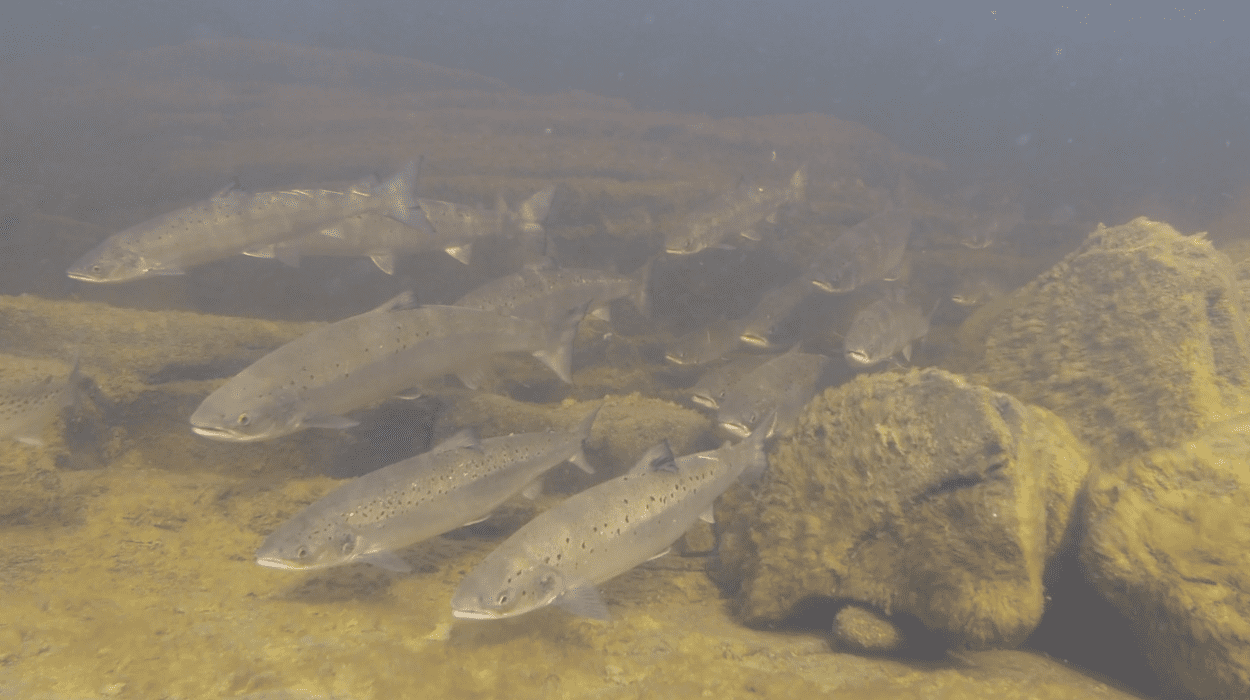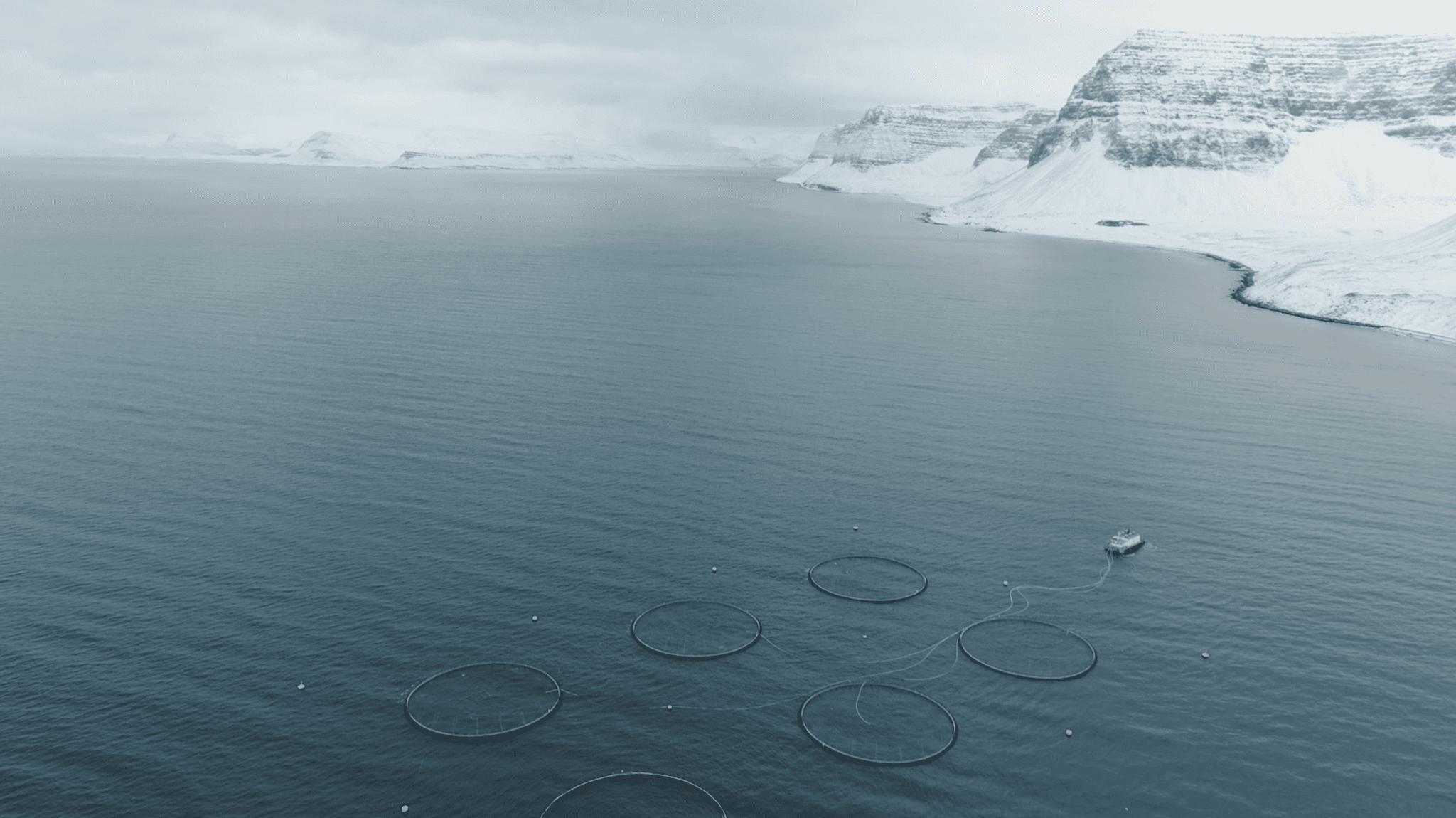Key factors
- A recent study conducted in Canada found European genes in wild salmon populations – proof that un-authorized strains have been imported to Canada in violation of international agreements.
- Conservation groups have been conducting and gathering research on wild salmon in Canada for over five decades. Wherever there is aquaculture, wild salmon have been formally assessed as either “threatened” or “endangered”.
- More than 750,000 salmon have esaped from open net pens on the south coast of Newfoundland since fish farming started and farmed salmon can be found in at least 17 rivers in the area.

Situation in Canada
Like elsewhere in the world, Canadian stocks have been in rapid decline for the past 40 years. Over the past few years, adult Atlantic salmon spawning in Canadian rivers have fluctuated between 500,000 – 600,000 compared to 800,000 – 900,000 spawners 40 years ago. Human interference, industrial aquaculture included, is the considered the largest threat to Canadian stocks.
With an annual output of about 75,000 tons, industrial aquaculture in Atlantic Canada is relatively small in size, yet impacts on wild stocks can still be felt. This is despite the fact that Canada (unlike Iceland) banned the use of fertile foreign salmon strain in their waters. Nonetheless, a recent study conducted in the Bay of Fundy found European genes in wild populations – proof that un-authorised strains have been imported into Canada in violation of NASCO’s Williamsburg Resolution, to which Canada is a signatory.
Conservation organizations such as the Atlantic Salmon Federation have been conducting and gathering research on wild salmon in Canada for over five decades, and the effects of fish farming on wild stock are clear. While the historic decline of salmon stocks is largely due to low survival rates at sea, there are always larger declines where fish farming is close to wild salmon. Everywhere there is salmon aquaculture, wild Atlantic salmon populations have been formally assessed as either “threatened” or “endangered.” Escapees have been identified in all regions where salmon farming occurs. More than 750,000 salmon have escaped from sea cages on the south coast of Newfoundland since fish farming started, and farmed salmon are now in at least 17 south coast rivers. These escapees interbreed with wild stocks, causing a weakening of the wild species due to genetic erosion. Recent research conducted in southern Newfoundland found evidence of genetic introgression with wild stocks. This, in addition to sea lice issues and diseases, ultimately lead to declines in wild stocks.
Sources
- https://www.youtube.com/watch?v=dkCl2R90IJ8&feature=youtu.be
- Bourret V, O’Reilly PT, Carr JW, Berg PR, Bernatchez L. 2011. Temporal change in genetic integrity suggests loss of local adaptation in a wild Atlantic salmon (Salmo salar) population following introgression by farmed escapees. Heredity, 106, 500–510.
- Fleming, I.A., Hindar, K., Mjolnerod, I.B., Jonsson, B., Balstad, T. and Lamberg, A. 2000. Lifetime success and interactions of farm salmon invading a native population. Proceedings of the Royal Society of London Series B-Biological Sciences, 267: 1517-1523.
- Gargan, P. G., Forde, G., Hazon, N., F., R. D. J. & Todd, C. D. 2012. Evidence for sea lice-induced marine mortality of Atlantic salmon (Salmo salar) in western Ireland from experimental releases of ranched smolts treated with emamectin benzoate. Canadian Journal of Fish and Aquatic Sciences, 69: 343-353.
- Glover, K.A., Pertoldi, C., Besnier, F., Wennevik, V., Kent, M., and Skaala, Ø. 2013. Atlantic salmon populations invaded by farmed escapees: quantifying genetic introgression with a Bayesian approach and SNPs. BMC Genetics, 14:4.
- Goodbrand et al. 2013. Sea cage aquaculture affects distribution of wild fish at large spatial scales. Canadian Journal of Fisheries and Aquatic Sciences, 2013, 70(9): 1289-1295
- Helland, I.P., Finstad, B., Uglem, I., Diserud, O.H., Foldvik, A., Hanssen, F., Bjørn, P.A., et al. 2012. What determines salmon lice infections on wild salmonids? Statistical calculations of data from the national salmon lice surveillance program 2004–2010 (in Norwegian). NINA Report, 891. 51 pp.
- Helland, I.P., Uglem, I., Jansen, P.A., Diserud, O, H., Bjørn, P.A. & Finstad, B. 2015. Statistical and ecological challenges of monitoring parasitic sea lice infestations in wild salmonid fish stocks. Aquaculture Environment Interactions, 7: 267-280.
- Hutchinson P, editor. 2006. Interactions between aquaculture and wild stocks of Atlantic salmon and other diadromous fish species: science and management, challenges and solutions. Proceedings of an ICES/NASCO Symposium held in Bergen, Norway, 18–21 October 2005. ICES J Mar Sci 63:(7).
- Johnsen BO and Jensen AJ. 1994. The spread of furunculosis among salmonids in Norweigan rivers. J Fish Biol 45: 47–55
- Krkosek, M., J. Ford, A. Morton, S. Lele, R.A. Myers,& M. Lewis, 2007. Declining wild salmon populations in relation to parasites from farm salmon. Science 318, 1772-1775.
- Krkosek, M., et al. 2006. Epizootics of wild fish induced by farm fish. Proceedings of the National Academy of Sciences of the USA. 103, 15506-15510.
- Krkošek, M., Revie, C.W., Gargan, P.G., Skilbrei, O.T., Finstad, B., and Todd, C.D. 2013. Impact of parasites on salmon recruitment in the Northeast Atlantic Ocean. Proceedings of the Royal Society B: Biological Sciences 280: 20122359.
- McGinnity, P., Stone, C., Taggart, J. B., Cooke, D., Cotter, D., Hynes, R., McCamley, C., et al. 1997. Genetic impact of escaped farmed Atlantic salmon (Salmo salar L.) on native populations: use of DNA profiling to assess freshwater performance of wild, farmed, and hybrid progeny in a natural river environment. ICES Journal of Marine Science, 54: 998-1008.
